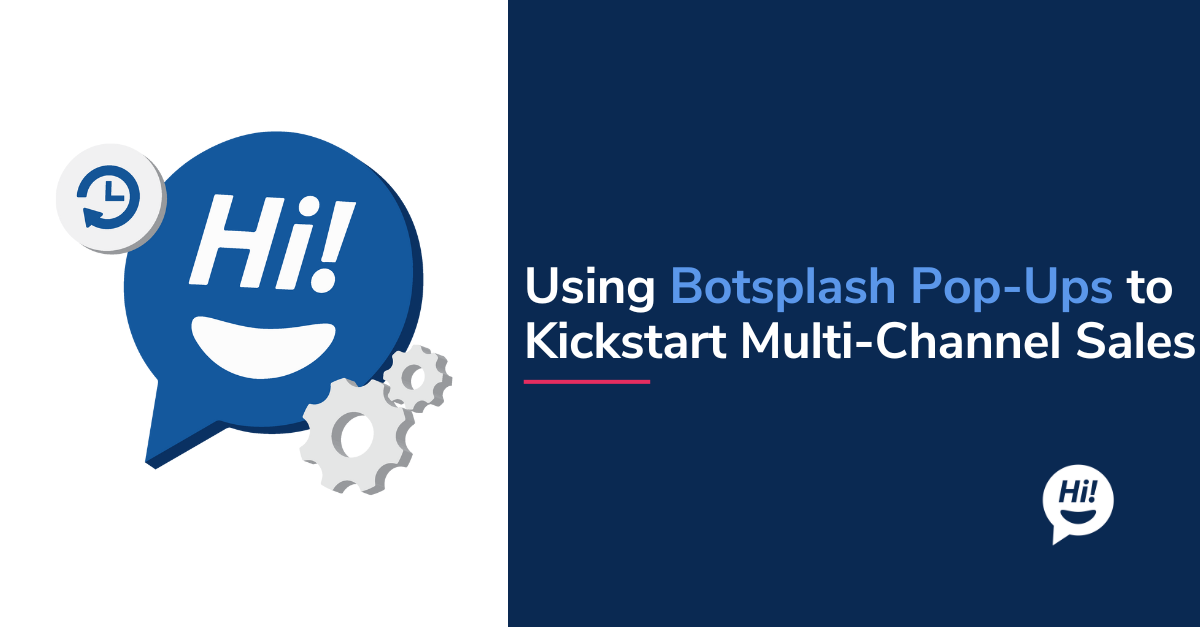In “Chatbots: A Brief History Part I – 1960s to 1990s”, readers embarked on a historical journey regarding the evolution of chatbot technology and the artificial intelligence that made it all happen. What started as rudimentary chatterbot programs in the 1960s would develop into sophisticated and complex thinking programs by the 1990s and pave the way for chatbot technology to truly move mountains for consumer communication and engagement in the 2000s and beyond.
Machine learning, natural language processing, and advanced algorithms would be the identifying factors for chatbot technology moving forward into the 21st century. Chatbot technology seemingly began to take on a life of its own as it became more ‘sentient’ than ever before, allowing artificial intelligence to bring customized characterizations like unique character traits and personalities to individual chatbots and thus drive conversations with consumers.
Chatbot in The Early 2000s
In 2001, the SmarterChild chatbot was introduced and made available on communication platforms such as America Online Instant Messenger and Microsoft Messenger. The SmarterChild chatbot “…could help people with practical daily tasks as it could retrieve information from databases about movie times, sports scores, stock prices, news, and weather. This ability marked a significant development in both the machine intelligence and human–computer interaction trajectories as information systems could be accessed through discussion with a chatbot” (Adamopoulous, E. & Moussiades, L., 2020). The SmarterChild chatbot would later be seen as a precursor to many of today’s virtual assistant applications such as Apple’s Siri and Samsung’s S Voice.
Chatbot technology was no longer just programs in which inputs generate outputs based on cataloged information. Chatbot technology was now ‘life-like’, providing a means for consumers to communicate with businesses, but in a way that consumers felt they were communicating with actual people. The Mitsuku chatbot created by Steve Worswick in 2005 is a prime example of this. It was an emotionally intelligent chatbot that conversed with users in a humorous and empathetic way. Another example of a chatbot taking on a human persona and interacting with people came in 2006, when IBM introduced their supercomputer WATSON and designed it specifically to face human contestants on the popular game show Jeopardy using natural language processing.

Chatbot from 2010
By the time the Aughts were over and the 2010s began, chatbot technology migrated from simple chat widgets on websites, which still are in use to this day, to the smartphones that are now in everyone’s pockets. In 2010, Apple created Siri, an intelligent personal assistant featuring a natural language user interface which answered voice commands and internet service requests. The Age of Virtual Assistants was finally here and made chatbot technology approachable for the average person.
As Apple’s Siri gained traction as a chatbot with a purpose and a personality, it was only a matter of time until corporate competitors followed suit. Internet technology-mogul Google introduced their own chatbot in 2012 named Google Now. With Google Now, consumers could interact with the chatbot to get their questions answered and perform actions through requests made to a set of web services. It was initially a way to get contextually appropriate information based on location and time of day, but it was improved upon year after year, and in 2017 Google replaced it with Google Assistant– a chatbot with far greater capabilities than its predecessor with the goal of providing easy-to-read information.
The remarkable development of chatbots took this technology from being strictly keyboard-input-dependent to being voice-activated and integrated. Microsoft took the leap in voice-activated chatbot technology back in 2014 when they introduced Cortana – a program that uses voice recognition and relevant algorithms to respond to an individual’s voice command. Similarly, and in the same year, Amazon followed Microsoft’s route of introducing a voice-activated chatbot with the introduction of Alexa. Alexa, an intelligent personal assistant, is now a part of most of Amazon’s household technological products such as the Amazon Echo.
The latter half of the 2010s also saw chatbot technologies undergo yet another revolutionary transformation by incorporating the artificial intelligences behind the chatbot technologies into social media platforms. Soon, platforms like Facebook Messenger, Kik, Slack, Telegram, and WhatsApp began implementing chatbot technology in their services and are today used by millions of people worldwide.

Telegram opened its app in 2015 for developers to build and deploy bots, and in 2016, Facebook followed suit, allowing developers to create interactive bots on the Facebook Messenger platform. More than 10,000 bots became available within the first two months of the new development period. By the end of the 2010s, chatbots were fully fleshed out conversational agents that could provide fast and easy access for consumers to get in touch with businesses and other applications.
With the advent of smarter, more efficient chatbot technologies, the 2010s also saw an influx of more and more small businesses and companies offering chatbot technologies as part of their product line. One such example is the SaaS-based company Botsplash which was formed in 2017. Botsplash envisioned a chatbot software which would enable consumers and businesses to engage with one another seamlessly, allowing both parties to fully express their needs and concerns.
Botsplash’s chatbot is customizable, allowing enterprises to give their consumers several unique options before initiating a conversation with a live agent. The chatbot utilizes automation to give consumers a hybrid experience of automated, logic-driven chatbot conversations and live agent chat. While Botsplash stands on the shoulders of the chatbot giants examined in this historical overview, it aspires to be the next great communication tool of the present and into the future, carrying on the tradition of engaging machines with humans in the area of digital communication.
Are Chatbots The Future?
In conclusion, “Chatbots: A Brief History Part I – 1960s to 1990s” and “Chatbots: A Brief History Part II – 2000s and Beyond” provide a chronological timeline of the evolution of chatbots and their accompanying technologies and artificial intelligences. This two-part history series illustrates the rapid rate at which chatbots grew in intelligence and usage from being simple computerized input programs to fully fleshed-out personalized virtual and personal assistants.
Yet, no matter the drastic changes within its technological frameworks, chatbots still effectively carry out the same purpose they had in the mid-20th century – to connect individuals through cost-effective and digital means of communication.
References:
Adamopoulou, E. & Moussiades, L. “Chatbots: History, technology, and applications.” Machine Learning with Applications, vol. 2, 2020, https://www.sciencedirect.com/science/article/pii/S2666827020300062. Accessed 6 June 2022.
Arya, M. “A brief history of Chatbots.” Chatbots Life. 11 March 2019. https://chatbotslife.com/a-brief-history-of-chatbots-d5a8689cf52f. (6 June 2022).
Ina. “The History of Chatbots – From ELIZA to ALEXA.” Onlim. 12 October 2017. https://onlim.com/en/the-history-of-chatbots/. (6 June 2022).
D’Souza, J. “The history of chatbots: From MIT to your website.” Engati. 4 January 2022. https://www.engati.com/blog/history-of-chatbots. (6 June 2022)
Gunko, I. “Is AI Really Intelligent? (And What It Means For Your Chatbot).” Cloud Academy. 6 May 2020. https://cloudacademy.com/blog/is-ai-really-intelligent-and-what-it-means-for-your-chatbot/. (6 June 2022)
Lohr, S. “Ending the chatbot’s ‘spiral of misery’.” Bdnews24.com. 5 April 2022. https://bdnews24.com/technology/2022/04/05/ending-the-chatbots-spiral-of-misery. (6 June 2022).
Morphy, E. “What’s Next for Bot Intelligence?” CMSWire. 17 July 2019. https://www.cmswire.com/digital-experience/whats-next-for-bot-intelligence/. (6 June 2022).
Oberoi, A. “The History and Evolution of Chatbots.” Daffodil. 30 October 2019. https://insights.daffodilsw.com/blog/the-history-and-evolution-of-chatbots. (6 June 2022).
Zemčík, T. “A Brief History of Chatbots.” Department of Social Sciences, VŠB - Technical University of Ostrava, Czech Republic, https://www.researchgate.net/publication/336734161_A_Brief_History_of_Chatbots. Accessed 6 June 2022.
To learn more about Botsplash click the button below to schedule a demo with our team.


.png)






